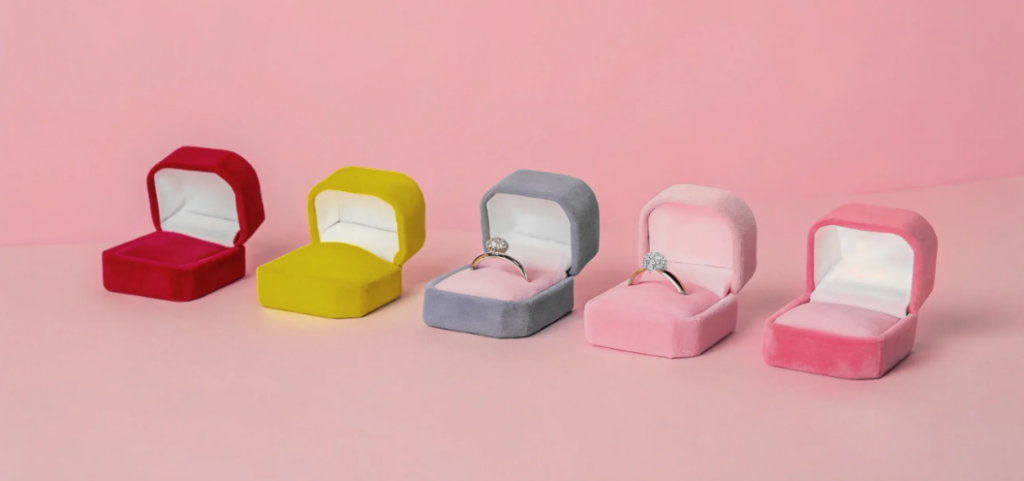A jewelry box serves more than just a storage purpose—it protects valuable pieces from damage and enhances their presentation. One of the most crucial aspects of a well-crafted jewelry box is its lining material. The right lining not only provides a luxurious feel but also ensures that jewelry remains untarnished and free from scratches. This article explores various jewelry box lining material and their benefits to help you choose the best option.

1. Types of Jewelry Box Lining Materials
Velvet
Velvet is a classic choice for jewelry box lining due to its soft and luxurious texture. It provides a plush cushioning effect that prevents jewelry from getting scratched. Available in various colors, velvet adds an elegant and timeless appeal to any jewelry box. However, it may attract dust and require regular maintenance to retain its rich appearance.
Suede
Suede is another popular choice, known for its soft, slightly textured surface. It offers a luxurious feel and is less prone to attracting dust compared to velvet. Microfiber suede is a synthetic alternative that provides the same premium look while being more durable and easier to clean.
Satin
For those who prefer a sleek and glossy finish, satin is an excellent option. This smooth fabric adds a sophisticated touch to jewelry boxes and is particularly suited for high-end or antique jewelry. However, satin is more delicate and may be less effective in preventing movement within the box.
Felt
Felt is a budget-friendly yet effective option for jewelry box linings. It provides a soft surface that cushions jewelry pieces and prevents scratches. While it lacks the luxurious appeal of velvet or suede, felt is durable and available in a variety of colors to suit different aesthetics.
Leather or Faux Leather
Leather and faux leather linings add a refined and contemporary look to jewelry boxes. These materials are durable, easy to clean, and resistant to dust accumulation. They provide a sleek surface that pairs well with modern and minimalist jewelry box designs.
2. Factors to Consider When Choosing a Lining Material
- Protection: The primary function of a lining material is to prevent scratches and tarnishing. Choose a fabric with a soft, non-abrasive texture.
- Aesthetic Appeal: The lining should complement the jewelry box design and enhance the visual appeal of stored pieces.
- Durability: Consider how well the material resists wear, dust accumulation, and maintenance requirements.
- Moisture Resistance: Some jewelry materials are prone to tarnishing. Opt for linings that help absorb moisture and prevent oxidation.
- Ease of Maintenance: Some materials, such as velvet, require more upkeep, while others, like faux leather, are easier to clean.
Choosing the right jewelry box lining material enhances both functionality and aesthetics. Whether you prefer the classic luxury of velvet, the durability of suede, or the sleek appeal of satin, selecting the right lining ensures your jewelry remains protected and beautifully displayed. Understanding the properties of different materials will help you make an informed decision tailored to your specific needs.

